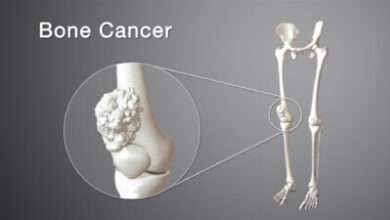Understanding Skin Cancer: Causes, Prevention, and Treatment

Skin cancer is a term that strikes fear into many, yet understanding it better can empower individuals to take preventive measures and seek timely treatments. This article delves into the causes, types, prevention strategies, and available treatments for skin cancer. Let’s explore everything you need to know about this prevalent yet often preventable disease.
What is Skin Cancer?
Skin cancer arises when the cells in the skin grow uncontrollably, forming malignant tumors. It often starts in areas exposed to the sun, though it can appear anywhere on the body.
How Skin Cancer Develops
Skin cancer begins when DNA in skin cells is damaged. This damage triggers mutations that cause cells to divide and grow uncontrollably. While most skin cancers are caused by ultraviolet (UV) radiation from the sun or tanning beds, other factors like genetic predisposition or exposure to harmful chemicals can also contribute.
Common Symptoms

Symptoms of skin cancer can vary depending on its type but often include unusual growths, changes in existing moles, or sores that don’t heal. It’s crucial to monitor your skin regularly and consult a dermatologist if you notice any abnormalities.
Types of Skin Cancer
There are several types of skin cancer, each with unique characteristics. Understanding these can help in identifying and managing the disease.
Basal Cell Carcinoma (BCC)
The most common type of skin cancer, BCC, often appears as a pearly bump or a flesh-colored growth. It develops in the basal cells, which are responsible for producing new skin cells. While BCC rarely spreads, it can cause significant damage to surrounding tissues if left untreated.
Squamous Cell Carcinoma (SCC)
SCC is the second most common type of skin cancer. It typically manifests as a red, scaly patch or a sore that doesn’t heal. Found in the outer layers of the skin, SCC can spread to other parts of the body if not treated promptly.
Melanoma
Melanoma is the deadliest form of skin cancer but is less common than BCC and SCC. It originates in melanocytes, the cells responsible for pigment in the skin. Melanoma often appears as a dark, irregularly shaped mole. Early detection is critical, as melanoma can spread quickly.
Other Rare Types
There are also rare forms of skin cancer, such as Merkel cell carcinoma and Kaposi sarcoma. These are less common but often more aggressive and require specialized treatment.
Risk Factors for Skin Cancer
Certain factors increase the likelihood of developing skin cancer. Knowing these risks can help you stay vigilant.
Excessive Sun Exposure
Prolonged exposure to UV radiation is the leading cause of skin cancer. People who spend significant time outdoors without sun protection are at higher risk.
Fair Skin and Light Features
Individuals with fair skin, light eyes, and blonde or red hair are more susceptible to skin cancer due to lower levels of melanin, which provides some natural protection against UV rays.
Family History
A family history of skin cancer can increase your risk, especially for melanoma. Genetic predisposition plays a significant role in some cases.
Weakened Immune System
People with compromised immune systems, such as organ transplant recipients or those with certain medical conditions, are at higher risk of developing skin cancer.
How to Prevent Skin Cancer
Prevention is often the best approach to tackling skin cancer. Adopting a proactive attitude can significantly reduce your risk.
Use Sunscreen Regularly
Applying a broad-spectrum sunscreen with at least SPF 30 daily is one of the most effective ways to protect your skin. Reapply every two hours, especially after swimming or sweating.
Seek Shade
Avoid direct sunlight during peak hours, typically between 10 a.m. and 4 p.m. If you must be outdoors, wear protective clothing, hats, and sunglasses.
Avoid Tanning Beds
Tanning beds emit UV radiation, which increases the risk of skin cancer. Opt for sunless tanning products if you desire a bronzed look.
Regular Skin Checks
Perform monthly self-examinations to identify any new or changing spots on your skin. Annual check-ups with a dermatologist are also recommended, particularly if you have risk factors.
Diagnosing Skin Cancer
Early diagnosis is key to successful treatment. Skin cancer is usually diagnosed through a combination of physical examinations and diagnostic tests.
Self-Examination
Regularly examining your skin for new or unusual growths can help you detect skin cancer early. Use the ABCDE rule to assess moles:
- A: Asymmetry
- B: Border irregularity
- C: Color variations
- D: Diameter larger than 6mm
- E: Evolving over time
Professional Examination
Dermatologists use tools like dermatoscopes to examine suspicious lesions. If a spot looks concerning, they may perform a biopsy to confirm the diagnosis.
Imaging and Staging
For advanced cases, imaging tests such as CT scans or MRIs may be necessary to determine if the cancer has spread.
Treatment Options for Skin Cancer
The choice of treatment depends on the type, size, location, and stage of the cancer. Here are the most common options:
Surgical Methods
- Excisional Surgery: The tumor and some surrounding tissue are removed.
- Mohs Surgery: A precise technique where layers of cancerous tissue are removed until only cancer-free tissue remains.
Radiation Therapy
Radiation therapy uses high-energy rays to target and destroy cancer cells. It’s often used for cancers that cannot be surgically removed.
Chemotherapy
Topical or systemic chemotherapy may be used to kill cancer cells. While effective, it’s often reserved for more advanced cases.
Immunotherapy
Immunotherapy boosts the body’s immune system to fight cancer cells. It’s an emerging treatment with promising results, particularly for melanoma.
Living with Skin Cancer
A skin cancer diagnosis can be life-altering, but many people live full, healthy lives after treatment.
Coping Emotionally
Dealing with a cancer diagnosis can be overwhelming. Seek support from friends, family, or professional counselors to manage the emotional impact.
Post-Treatment Care
Follow-up appointments are crucial to ensure the cancer hasn’t returned. Maintaining a healthy lifestyle and continuing preventive measures can help minimize risks.
Raising Awareness
Educating others about skin cancer and its prevention is a meaningful way to give back. Share your experience to encourage others to take proactive steps.
Conclusion
Skin cancer is a serious but often preventable condition. By understanding the risks, adopting protective measures, and seeking prompt medical attention when necessary, you can significantly reduce the impact of this disease. Whether you’re looking to prevent skin cancer or manage a diagnosis, staying informed is your most powerful tool.
Stay vigilant, protect your skin, and prioritize your health.



